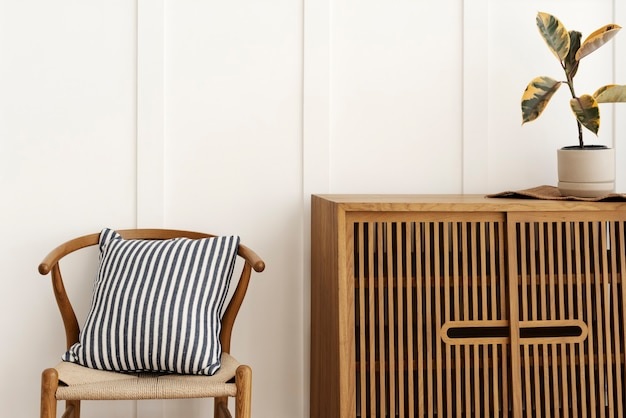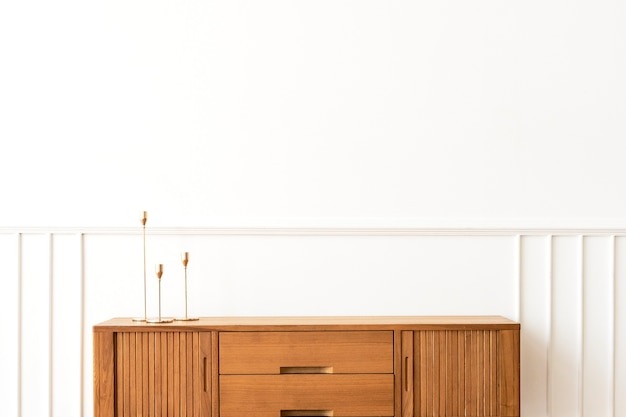- Blogs
- How to Inspect Secondhand Furniture for Damage
How to Inspect Secondhand Furniture for Damage

You may already know that buying brand-new furniture can put a huge dent on your wallet, and that buying secondhand is a great alternative. Aside from helping you save money that you can allot towards other things, buying preloved furniture also gives you the opportunity to scour one-of-a-kind pieces with their own unique character. Plus, buying secondhand is now just as easy, if not easier, than purchasing from a retail store. Buy and sell online platforms like LookingFour offer absolute convenience as well as a wide range of options.
That being said, whether you choose to buy in person or online, you must remember that not all secondhand furniture pieces will come to you in pristine condition. If you’re buying pre-owned pieces, you can definitely expect some level of wear and tear; this, after all, is what accounts for the lower price. However, you’ll also want to avoid saying yes to something that’s damaged to the point of being almost unusable. Before agreeing to the purchase, take the opportunity to conduct a thorough inspection of the furniture and make sure you’re getting your money’s worth.
Below are some tips on how to inspect secondhand furniture for damage, which will save you from heartbreaks and help you avoid costly decisions:
Pre-Inspection Preparations

Before you buy any piece of furniture, be it brand new or secondhand, you’ll need to know first if it can actually fit your space. This applies particularly for living room furniture like sofas and TV consoles, dining room tables, cabinets, and other large items.
Start by measuring the height, width, and depth of the space where you’re planning to put your new furniture. Then, get the measurements of the furniture itself. If you’re buying online, ask the seller to provide the exact dimensions of the piece.
It would also help to pick and measure a couple of “safety spots.” This way, if you love the furniture but it doesn’t fit where you originally planned to put it, you’ll still have options.
Finally, don’t forget to measure the spaces where you’re going to pass to get the furniture where you need it to be. These include doorways and corridors, as well as stairs and even elevators depending on where you live. Doing so will limit the number of problems you encounter when transporting your new furniture and installing it into your home.
Visual Inspection Tips
Once you’re sure that the furniture can be comfortably placed in your intended area, it’s time to conduct a visual inspection. Look for any visible signs of extreme wear, as well as stains or discoloration. You should also examine the piece’s structure for any cracks, dents, or warping. Make sure to pay close attention to joints and corners to ensure that these are all secure and undamaged.
In addition, keep an eye out for any signs of pests or infestations, such as sawdust or animal droppings. Some insects, like termites, may also leave behind their shed wings on a piece’s surface. Remember to check for these if you’re buying wood furniture.
Lastly, take a look at the insides and the backs of each piece of furniture to see if there are any holes, structural defects, and other similar issues. Being able to see these upfront will help you plan for any repairs you’ll need to spend on.
Functional Inspection Tips

It’s crucial to test the functionality of any secondhand furniture you buy, especially if the piece has a lot of moving parts. For cabinets and drawers, check the doors for smooth operation and make sure that they lie completely flat when closed. Don’t forget to check the hardware as well. While it’s relatively easy to replace hinges and handles, having these parts already intact in your preloved furniture will allow you to save on refurbishing costs.
Meanwhile, you can evaluate the stability and balance of chairs and tables by applying gentle pressure on them or sitting on them. If the furniture comes with cushions or upholstery, make sure the foam or filling is still in good shape. Do note that it’s inadvisable to purchase certain items like mattresses secondhand due to hygiene concerns.
Smell and Cleanliness Evaluation Tips
The smell on a piece of furniture can reveal a lot about its condition. It’s easy to wash stains off of upholstered furniture, but odors can actually sink deep into the material and linger for a long time.
Thus, it’s absolutely necessary to perform a sniff test on your secondhand furniture for any unpleasant odors. Your sniff test may be able to indicate hidden issues such as mold, mildew, or smoke damage. Even mild odors may be challenging to remove, so it's important to assess whether you can live with them or whether they’re a deal-breaker for you.
Tips on Factoring in the Cost of Cleaning and Repairs
An important part of inspecting secondhand furniture is your assessment of whether you can adequately clean the furniture yourself or whether you need professional assistance. Most people forget that the true cost of buying secondhand furniture includes the price of cleaning and repairs. If you’re going to end up spending more on restoring the furniture so that it’s actually usable, it may not be as practical as you intended it to be.
Extra Tips: Consider Getting an Expert Opinion and Asking for Professional Assistance
Though the tips above cover the basics of inspecting secondhand furniture, sometimes identifying certain types of damage or evaluating the extent of repairs needed requires an expert’s opinion or the assistance of professionals. If you’re unsure about specific issues or if the furniture requires significant restoration, don’t hesitate to consult experts or seek out furniture restoration services. Their expertise can provide you with valuable insights and help you make an informed decision.
It’s also a good idea to enlist the help of experts if you’re planning on buying antiques. Doing this can help you avoid counterfeits as well as ensure that the pricing is accurate.
It’s important to inspect secondhand furniture for damage before you buy it so that you know you’re getting the best value out of your money. Follow the tips and guidelines mentioned above to find hidden gems that fit both your style and budget, all while ensuring the furniture’s quality and longevity.
Related Posts

4 Things to Take into Consideration When Furnishing Your Living Room
The living room, or sala, is one of the most popular rooms in any Filipino home. More than a place for the family to rest and relax in, the living room serves as a venue for different important family gatherings and activities, like birthday parties and family reunions. Needless to say, it's an area where families typically receive and entertain guests and bond with friends.

5 Things to Remember When Selling Your Old Stuff Online
If you play your cards right, it can be extremely rewarding to sell secondhand items online. Doing so will give you the opportunity to declutter your home and get rid of items you no longer need, as well as earn some extra money on the side.

6 Online Buying Etiquette Rules to Follow
Filipino consumers enjoy shopping online for many reasons. For one thing, it's often more convenient than in-person shopping because one can shop wherever and whenever one likes. For another, buying online offers plenty of unique options and affordable deals that translate to saving money.

7 Tips for Families Moving Out of an Old Home and Into a New One
Moving out of your family's old home into a new one is a big milestone that can evoke a lot of emotions. On one hand, you might feel a deep sense of attachment to the home where your family lived for a long time.

3 Things to Do with Old Stuff You No Longer Need
These days, just about everything you can buy seems much more expensive than it ever was in years past, and most consumers will always be on the lookout for ways to save a little extra on their purchases when possible.

5 Common Reasons Families Replace Their Home Furniture
It's not unusual to part with certain belongings every now and then. That being said, getting rid of pieces of furniture that have been in your family or that you've grown accustomed to using can be a tough decision. This is especially true if the item has a lot of sentimental value or if you're not wholly convinced that you must let the piece go.

7 Items to Consider Buying Pre-Owned
These days, just about everything you can buy seems much more expensive than it ever was in years past, and most consumers will always be on the lookout for ways to save a little extra on their purchases when possible.

9 Online Selling Etiquette Rules to Follow
These days, just about everything you can buy seems much more expensive than it ever was in years past, and most consumers will always be on the lookout for ways to save a little extra on their purchases when possible.

4 Benefits of Buying Secondhand Furniture
Without a doubt, buying brand-new furniture can greatly improve your home's interior design. However, it's an option not every homeowner has. If you're working with a tight budget, you might not have enough cash to cover the cost of a brand-new furniture set.

5 Ingenious Ways to Recycle Your Old Furniture
When we talk about recycling, we usually think about elementary-school art projects with plastic bottles or those savvy "life hacks" for sustainable home decor. What some people may not be aware of is that furniture can be recycled too—that it's possible to breathe new life into old tables, chairs, couches, beds, and whatever furniture that's been around for years.